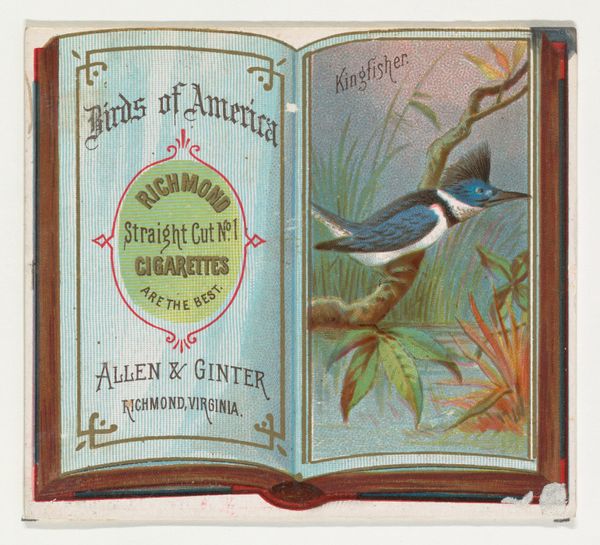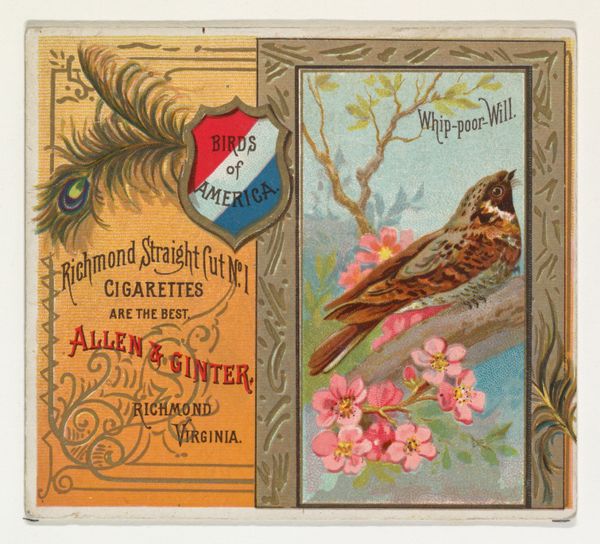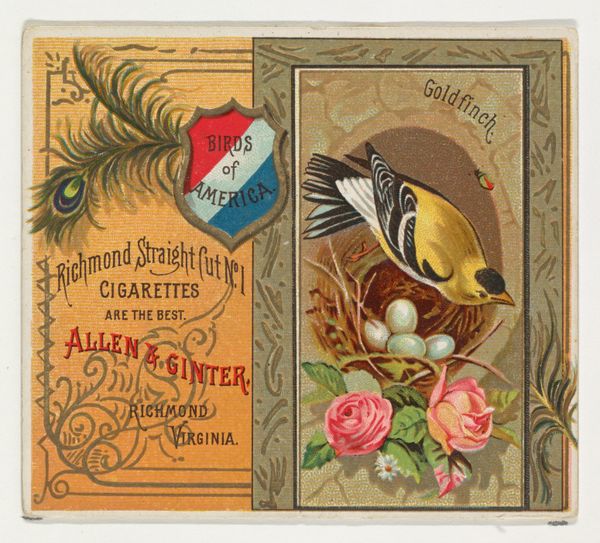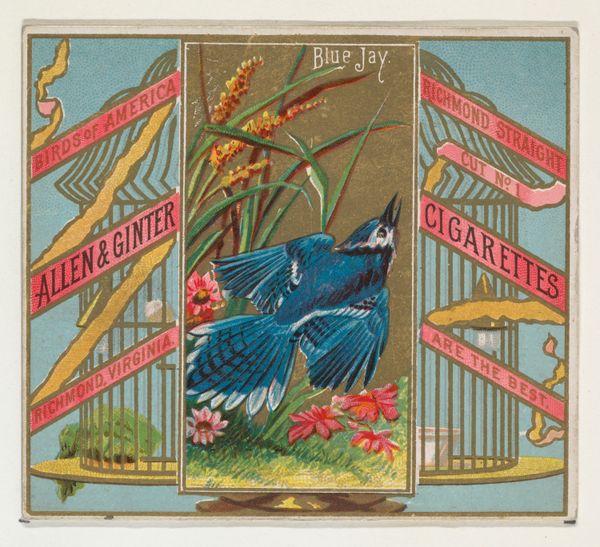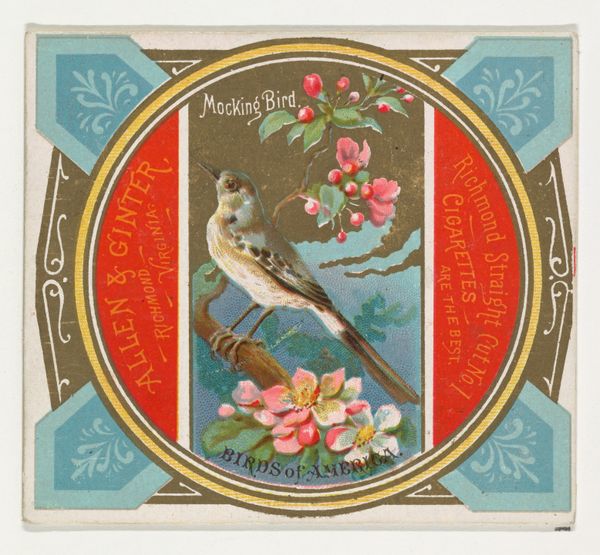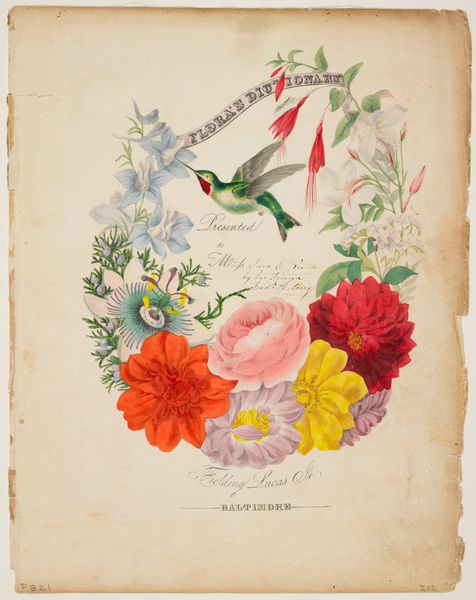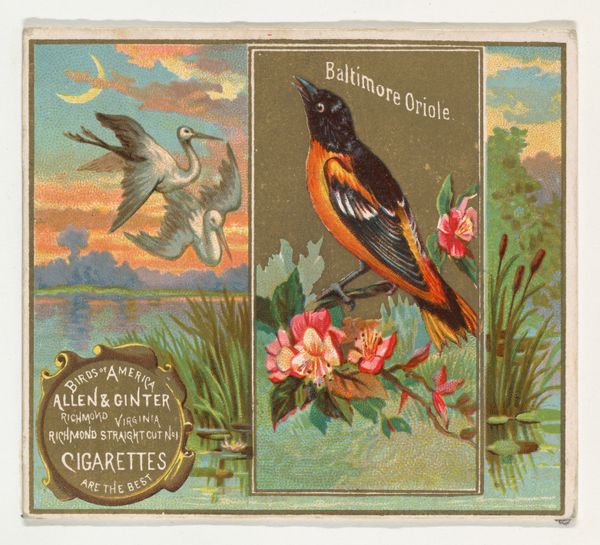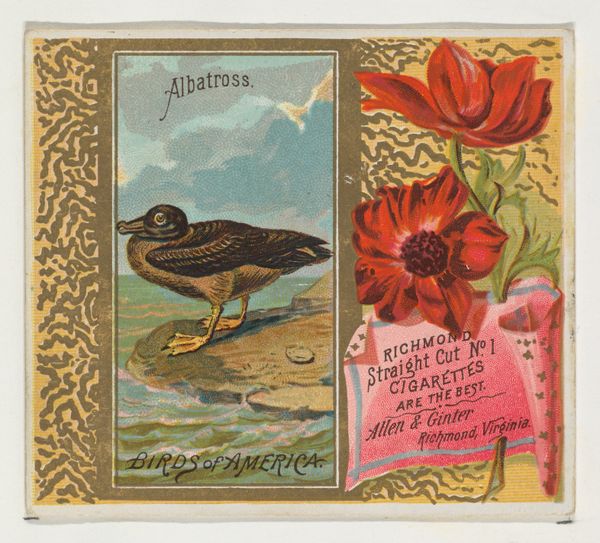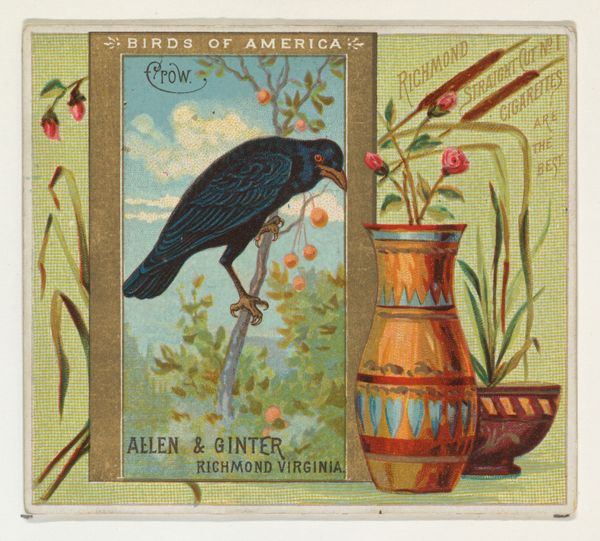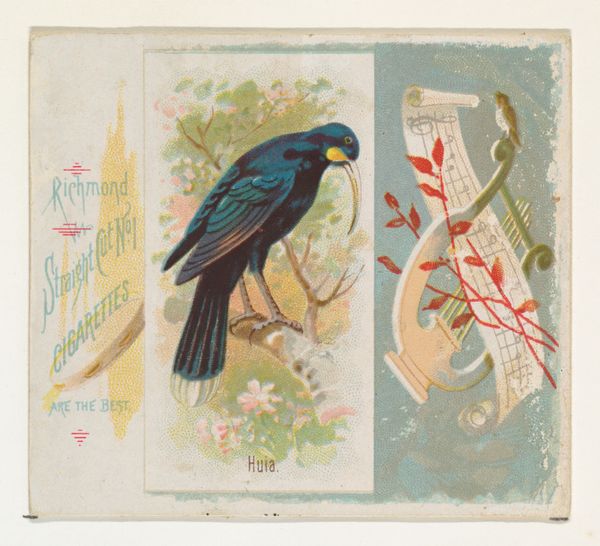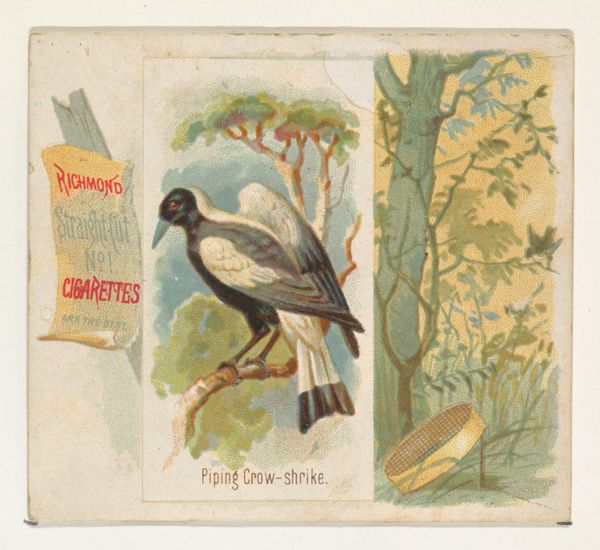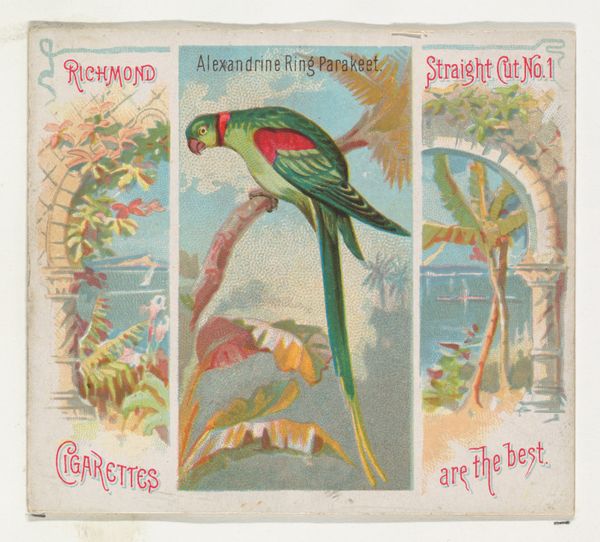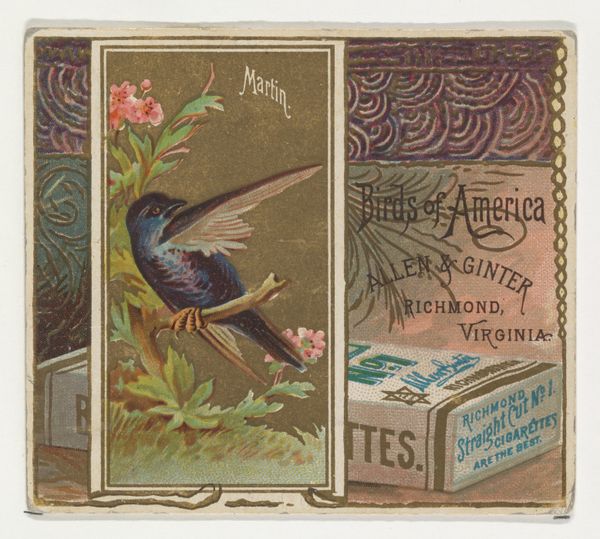
Blue Bunting, from the Birds of America series (N37) for Allen & Ginter Cigarettes 1888
0:00
0:00
drawing, print
#
drawing
# print
#
impressionism
#
bird
#
flower
Dimensions: Sheet: 2 7/8 x 3 1/4 in. (7.3 x 8.3 cm)
Copyright: Public Domain
Curator: What catches my eye immediately is how cleverly this small drawing achieves balance through contrasting tones and textures. Editor: We are looking at "Blue Bunting," a print from the "Birds of America" series dating back to 1888, part of a cigarette card collection by Allen & Ginter. What sociopolitical contexts do you think factored into its production and appeal during the late 19th century? Curator: Before diving into its social relevance, note how the artist employs subtle tonal modulations within the bird's plumage to suggest depth and contour. And how the vibrant floral details draw the viewer’s eye through the composition—a captivating semiotic exchange of color and form. Editor: It's impossible to separate this object from its original context—as a promotional item for a product linked to serious public health crises, but these collectible cards played a role in shaping American cultural identity and consumption habits, especially around leisure and the natural world. The serene depiction of nature on this card starkly contrasts the harms produced by the consumer culture surrounding tobacco. Curator: Fair enough. Yet, one cannot disregard the meticulous detail of the plant life juxtaposed with the bunting. This speaks volumes about the artist's intention to emphasize not merely the aesthetic beauty but also the symbiotic interplay within an ecosystem. Editor: That emphasis may also signal a rising desire in some late-19th century American communities to protect those ecologies in response to rampant industrialization, even as advertising manipulated those concerns to fuel greater sales. Curator: An insightful point! Perhaps this duality makes the drawing more powerful, creating tensions between artistic intent and commercial messaging, thus, compelling a viewer to contemplate our relation to nature as beauty, commodity, or both. Editor: And by understanding that, we recognize the necessity of deconstructing our ingrained biases regarding gender, race, class, and power that may shape our engagement with art. These are critical when investigating visual material in order to form robust critical analyses of works that continue to impact culture today.
Comments
No comments
Be the first to comment and join the conversation on the ultimate creative platform.
